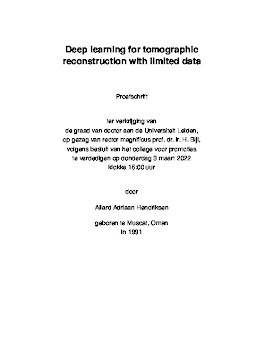2022-03-03
Deep learning for tomographic reconstruction with limited data
Publication
Publication
Tomography is a powerful technique to non-destructively determine the interior structure of an object.Usually, a series of projection images (e.g.\ X-ray images) is acquired from a range of different positions.from these projection images, a reconstruction of the object's interior is computed. Many advanced applications require fast acquisition, effectively limiting the number of projection images and imposing a level of noise on these images. These limitations result in artifacts (deficiencies) in the reconstructed images. Recently, deep neural networks have emerged as a powerful technique to remove these limited-data artifacts from reconstructed images, often outperformingconventional state-of-the-art techniques. To perform this task, the networks are typically trained on a dataset of paired low-quality and high-quality images of similar objects. This is a major obstacle to their use in many practical applications. In this thesis, we explore techniques to employ deep learning in advanced experiments where measuring additional objects is not possible.
| Additional Metadata | |
|---|---|
| K.J. Batenburg (Joost) | |
| Universiteit Leiden | |
| D.M. Pelt (Daniël) | |
| hdl.handle.net/1887/3277969 | |
| Organisation | Computational Imaging |
|
Hendriksen, A. (2022, March 3). Deep learning for tomographic reconstruction with limited data. Retrieved from http://hdl.handle.net/1887/3277969 |
|

